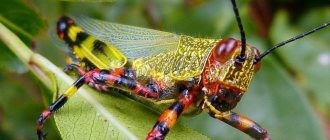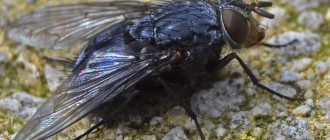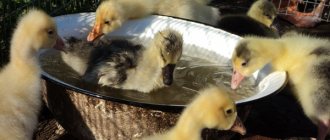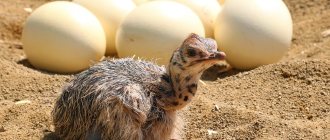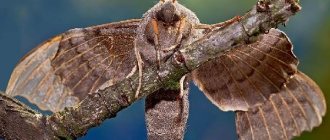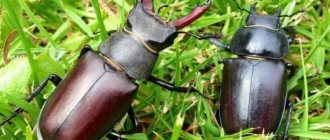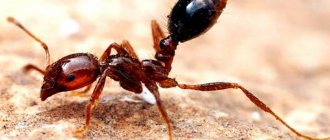Mating rituals of great grebes
These birds spend their time outdoors, making them easy to observe, and their spectacular courtship displays are the subject of one of the earliest in-depth studies of avian behavior.
The most common maneuver is the “head shake,” in which members of a pair swim toward each other and shake their heads from side to side. This ceremony is interrupted by the "pulling" of feathers. From the outside, the grebes seem to be plucking the feathers on the back of their chosen one, but in reality they are just making movements with their heads. Then come more complex manifestations of sympathy. The male and female dive for underwater plants, tear out the stems, emerge and quickly swim towards each other. They meet chest to chest, rise out of the water, shake their heads from side to side, still holding the weed in their beaks.
After choosing a mate and completing the colorful courtship ritual, when the birds have already created a union, they begin to lead a solitary lifestyle and lay eggs.
Great grebe's nest
Origin of the species
The great grebes belong to the group of grebes. Initially they were combined with loons, but now they are classified as a separate order of waterfowl. Research has shown that grebes create a separate lineage that separated in the process of evolution from loons quite a long time ago.
Grebes, like flamingos, belong to the Colymbea branch. This also includes hazel grouse and pigeons. At least eleven common characteristics have been discovered that are not found in other bird species.
Features of raising chicks
Great grebes have a surprisingly long breeding season. Birds lay eggs from February to October. The pair builds at least one nest. Birds construct auxiliary floating “platforms” for other purposes, including mating.
During incubation, the sitting parent (both members of the pair incubate the eggs) will leave the nest if it detects a predator in the distance. The bird covers the eggs with algae, so they quickly change color from white to dull brown. This reduces the likelihood that the eggs will be seen by a predator.
Great grebe with chicks
The chicks are also at risk of being eaten if they spend too long in the nest without mom and dad, so they "stand up" within a few hours of hatching. Parents carry small chicks on their backs, making it easier for the whole family to swim away from the shore.
The chicks are striped, their color resembles the uniform of prisoners. They are excellent swimmers as soon as they hatch, but for safety and to maintain body heat, the juveniles cling to the back of one of the parents and perch between the wings. They even hold onto the back while an adult dives.
The young are fed by one parent while the brood sits on the back of the other. The peculiarity of later rearing is not in the teamwork of the grebe, but in the “distribution of offspring”, with each parent receiving custody of their part of the brood and ignoring other chicks. But sometimes older chicks from an earlier brood join in feeding the juniors and help either parent.
Nutrition
Since the grebe's favorite habitat is the water element, it easily and quickly hunts all kinds of fish of various sizes (from very small representatives to relatively large specimens).
Sometimes the bird diversifies its diet with frogs, waterfowl insects, crustaceans, vegetation that can be found on the banks and surface of reservoirs, and other similar food. The main method of hunting that great grebes actively use is diving to a depth of up to four meters, where the bird deftly tracks down fish and then appears with it on the surface.
Grebe eats fish
The whole procedure takes her no more than seventeen seconds, but in the cold season it becomes much more difficult for her to hunt, so the duration and depth increase somewhat.
Great grebe in flight
Great grebes are adapted to an aquatic lifestyle. Therefore, it is difficult for a great grebe to fly, unlike, say, meadow or forest birds. When lifted into the air, it takes a long time to run up, trying with all its might to break away from the surface of the water. Therefore, the great grebes avoid small lakes and ponds.
Why do people love to watch great grebes?
When on the water, the Great Grebe looks graceful, its ornate plumage and stunning courtship rituals make the birds a favorite among aquatic life lovers.
How is a male different from a female?
The plumage color of individuals of different sexes is almost the same. In both females and males it is dark brown, and the head and lower body are white, beige or pale yellow. On the neck there is a peculiar “collar” of a reddish-chestnut hue. But you can see it only in the warm season. In summer, this bird can also be easily recognized by the colored feathers growing on its head, which in their shape resemble “horns”. With the onset of cold weather, they become shorter, and the “collar” disappears without a trace.
The sex of this unusual creature can only be determined by its size. The average length of the bird is 45-40 centimeters, and it weighs approximately 0.5 - 1.6 kilograms. Males are much larger than females. This is especially noticeable in the size of their wings, the length of which is more than 20 centimeters. Their scope is also quite large, it is 85-90 centimeters.
Nest
Great grebes build a floating nest from dead vegetation (mainly reeds and reeds), it is up to 60 cm in diameter and 80 cm in height, and its underwater height exceeds half a meter. The nest can be floating, but more often its base rests on the bottom of shallow water or is anchored on several reeds, which serve as a kind of frame for it. The birds place their nest in reed thickets to protect them from waves, but so that the parents can freely swim to the nest and, in case of danger, dive into the water. The Great Grebe's nest is always wet, which affects the entire egg incubation regime. After all, wet material has a high heat capacity. When the grebe is absent, the cooling rate of its wet nest is 4.5 times less than, for example, the dry nest of a black-headed gull. Usually the nests are located singly, but in lakes where there are a lot of fish, small colonies can be found.
LIFESTYLE
The Great Grebe is a freshwater bird. It can be found almost throughout Europe in lakes, ponds, rivers, artificial reservoirs and swamps. As a rule, the great grebe settles in water bodies with dense coastal vegetation. In the northern regions, the great grebe is a migratory bird. These migratory birds arrive at nesting sites located closer to the south as early as February. Most grebes fly away for the winter in November, although birds from the northern regions often remain in the breeding area until the water bodies are covered with ice. Regular seasonal migrations under normal conditions are the only opportunity for flight for the great grebe. The great grebe flies by rapidly flapping its wings, with the bird's neck extended forward and its legs along the body.
Description of the Great Grebe
The Great Grebe, a bird the size of a small duck, has a straight beak, slightly elongated wings and a fairly thin neck. Males of these birds are usually larger than females.
The wing length of females is from 16.8 to 19.9 cm, in males it is 17.5 – 20.9 cm. An adult female weighs from 570 to 1400 g, while a male weighs from 600 to 1500 g. In winter, the head of an adult dark gray above. In the back of the head there are two light, almost white spots.
Great grebe (Podiceps cristatus).
The back is dark in color, with a light edging of feathers. The belly and chest are white. During the mating season, a dirty orange collar is added to the color, located around the neck. Black feathers also grow on the head, looking like small “ears”.
Interesting Facts
There are many interesting facts about this bird today. Here are some of them:
- There is the smallest representative of this species, the lesser grebe. She is so small that her weight does not exceed one hundred and fifty grams;
- Representatives of this species have been observed eating their own feathers. In the process of eating food, these birds swallow the fish whole, and, as is known, the bones of the fish are quite sharp and can damage the throat, stomach and intestines of the bird. Therefore, in this case, feathers protect the bird from this by enveloping the fish bones;
- The bird is able to dive to quite great depths for its prey. In the same way, she protects herself from predators by diving into the water and emerging far from the place where the predator was circling;
- Small chicks dive with their parents on their backs, hiding under the wings, where an air cushion is created for a while, allowing the babies to breathe;
- The great grebes are the largest representative of grebes in Central Europe.
Come again
Listen to the voice of the great grebe
The audio tag is not supported by your browser. Close
Lifespan
This bird can safely be classified as a long-livers. However, their life expectancy directly depends on their living conditions. So in freedom they live from fifteen to twenty years, but in captivity this figure increases to twenty-five years.
Their life expectancy in freedom is influenced by many factors, including human guilt and the presence of natural enemies. Natural enemies include the crow and the reed harrier. These birds of prey feed on grebe eggs and destroy their nests. For grebe chicks, carnivorous fish pose a huge danger, which often drags them away from their parents.
Man’s guilt lies in his neglect of the environment and ecology. Today, many unscrupulous people are dumping waste into water bodies, which significantly pollutes the environment. This, in turn, can not only reduce the population of this species, but also the lifespan of already living representatives of the grebe bird.
Mommobile
Habitats
The great grebe is found everywhere on our planet. In particular, its habitat is widespread in Scandinavia, Siberia, Australia, New Zealand, the African continent and Asian countries. Populations of grebes, depending on their habitat, lead a sedentary or migratory lifestyle.
The grebe prefers to settle in the taiga, as well as in open areas where there is vegetation and a source of fresh water. Its favorite nesting places are reeds and tall grass growing around a body of standing water. They serve the bird not only as shelter, but also as a source of food.
A prerequisite for a comfortable stay for the great grebe is direct sunlight, which warms up the area well.

